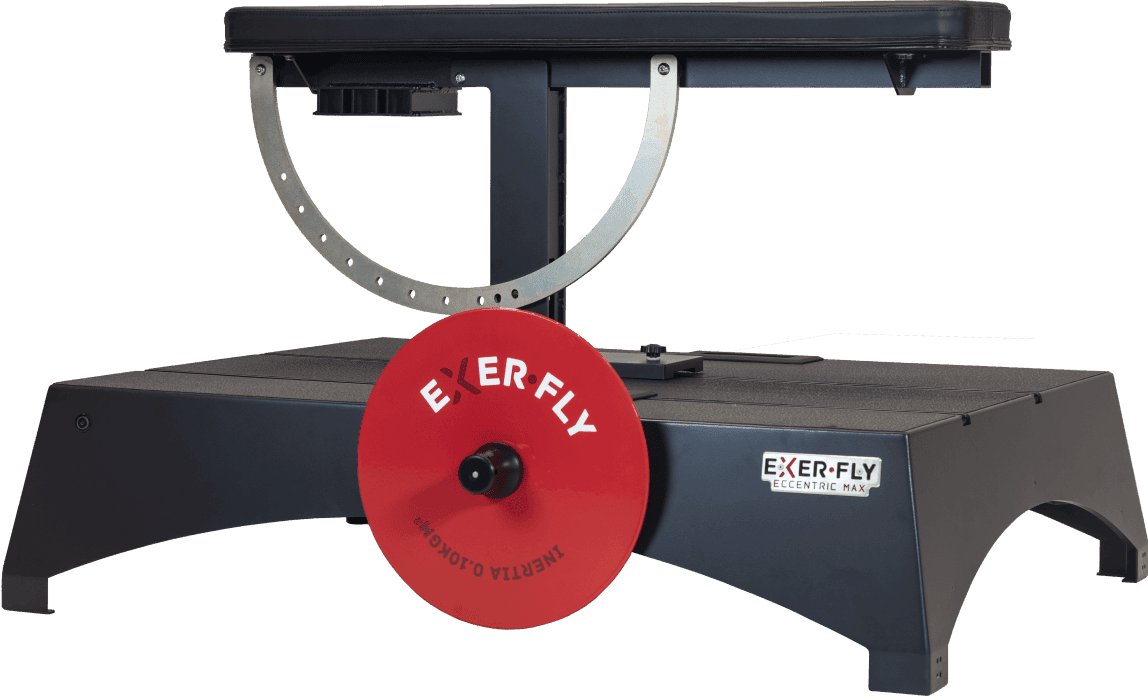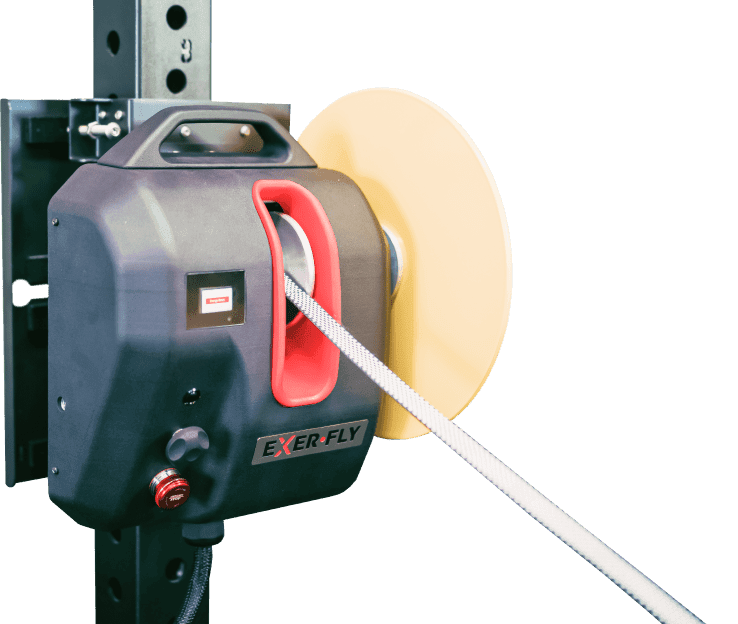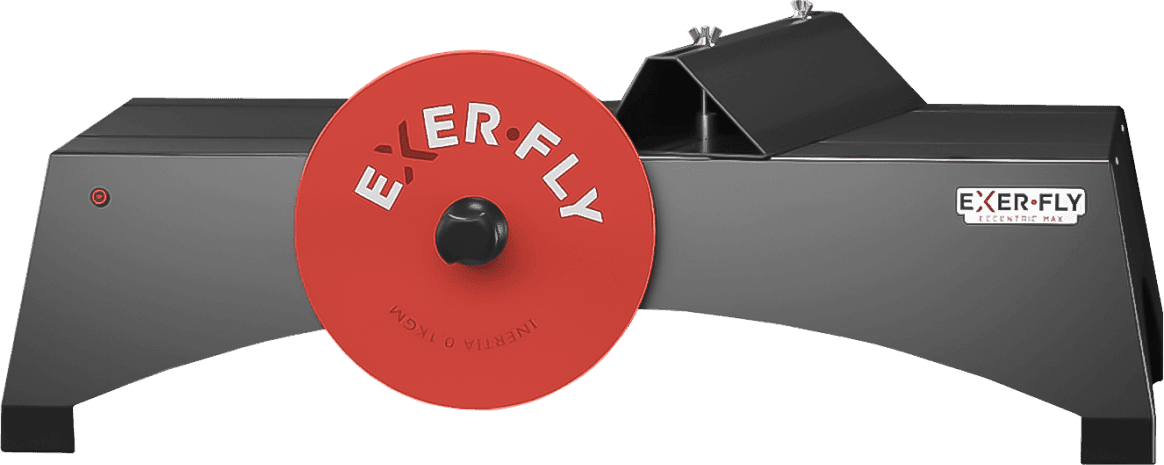
Eccentric Training For Vertical Jump: Add Inches In Weeks!
One of the most common metrics an athlete can measure their power and strength is performing a vertical jump. There are two types of athletes that find their way into a typical strength and conditioning program: the wiry athlete that can jump extraordinarily high but lacks overall strength and the incredibly strong athlete who can squat the house but barely gets inches off the ground.
Thanks to advancements in technology (i.e., Jump Mats, VALD ForceDecks, Hawkin Dynamics, etc.), coaches can customize and tailor unique programs based on the results of such equipment.
For ease and convenience, we will share a basic overview of athlete profiling and examples of exercise strategies based on those results. We will also provide combinations of traditional strength training and flywheel resistance training (FRT) to increase vertical jumps.
Assessing Vertical Jump Capabilities
Before increasing an athlete's vertical jump, we must assess their starting point. For ease, we will look into two movement screens designed to assist in developing a force-velocity profile and monitor adaptations throughout training phases.
Typically, there are spring proficient and static proficient athletes. Spring proficient athletes display biases in speed and velocity, whereas static proficient athletes favor strength and force output qualities.
The two tests we can use to set these athletes apart are the countermovement jump (CMJ) and the static jump (SJ). The goal of the CMJ and SJ is to jump as high as possible; the CMJ requires the athlete to have their hands on hips, chest up, and eyes forward.
They bend down to approximately ¼ squat depth, jump up as high as possible, land softly, and repeat. The SJ is administered in the same way. However, it requires a pause at the ¼ squat to isolate the concentric phase of the jump.
The major difference between the CMJ and SJ is that the latter determines an athlete’s reliance on eccentric loading since they are forced to pause. Both jumps are measured and recorded as height off the ground in inches.
Data can be recorded by calculating a user's standing reach height following their jump height. If we lack technology, the most simplistic way is to place tape where the top of the fingertips of the reaching hand is on the wall for reach height, CMJ height, and SJ height.
Often the values of the CMJ will be greater than the SJ test because of the athlete's stretch reflex capability, also known as the stretch-shortening cycle (SSC). In short, the SSC refers to the 'pre-stretch' or 'countermovement' action commonly seen during movements such as jumping.
This pre-stretch allows the athlete to produce more force and move quicker. Compared with pure concentric work, a functioning SSC during a complete movement cycle leads to a higher muscle efficiency (Thys et al., 1975).
Honing in on this concept would allow an athlete to transfer energy and power through the body and conserve energy, thereby improving mechanical efficiency. If an athlete can conserve energy via optimal muscle firing and efficient energy transfer, then that athlete will theoretically have more available energy on the court/field.
On the other hand, a very strong athlete with a poor ability to effectively transfer energy may produce a SJ value greater than the CMJ. This is less common and typically happens as a direct result of an athlete prioritizing absolute strength without incorporating any plyometric movement in their training.
Suppose an athlete lacks in both of these qualities. In that case, you are expected to work with an athlete with low training experience. Creating a generalized program that focuses on maximal strength paired with low-level reactive training is best.
Luckily, there are different ways that eccentric training can assist in increasing all of the components above and more. Inertial flywheel training as an option for eccentric training has significantly improved performance measures such as jumping, sprinting, and change of direction ability (Drury et al., 2019).
Using Flywheel Training To Jump Higher
After reviewing the data, we can implement the use of flywheel resistance training specifically tailored for an athlete's needs. An individual lacking sufficient eccentric strength must accommodate the eccentric forces by absorbing those forces over a longer period, nullifying the advantages of SSC actions (Miyaguchi & Demura, 2008).
Thankfully, the Exerfly has its advantages in producing significant eccentric loading capabilities depending on the loading mechanism (higher or lesser inertial loads). Three common exercises to increase vertical jump using the Exerfly platform are:
- Heavy flywheel squats paired with seated box jumps.
- Pin squats set to ½ squat depth paired with the same depth and fast flywheel squats.
- Heavy flywheel squats paired with light flywheel squats and/or rapid jumps.
Since the flywheel will pull the user down with the same amount of force being executed, it is suggested that the person be comfortable using the flywheel before execution. Maintaining proper form and loading into the hips with your spine stacked is imperative to prevent tipping over.
Heavy Inertia Flywheel Squats Paired With Jumps

Here, the athlete is responsible for squatting with a heavy flywheel(s) and exploding tall. Common cues for most lower body exercises would be to cement your feet into the ground, brace your core/body, and push your feet through the floor to a strong, standing position.
It is important to not "stay in the pocket" too long, meaning you do not want to spend too much time in the bottom position of the squat or the energy built up dissipates.
After you have completed the desired number of reps and the flywheel has stopped, the athlete will move to the plyometric pair by sitting on a box and focusing purely on the concentric action. Use this strategy for the athlete that needs to increase their overall strength base.

Pin Squats Set To ½ Squat Depth Paired With Low Inertia And Fast Flywheel Squats

Keeping the same principles above, set pins to custom height based on the individual. This exercise demands significant concentration to overcome a fixed resistance from a static position.
The athlete is meant to focus purely on the concentric action during pin squats, resting the bar on the pins before standing up. After these repetitions are complete, utilize the flywheel, squat to the same depth, and explode out of it.
Be prepared to be pulled back down! Stay fast, quick, and minimize torso involvement by using your legs as the main driver. Use this strategy for the athlete with a solid strength base but needs to build more elasticity.

Heavy Flywheel Squats Paired With Light Flywheel Squats
These two exercises are a combination of the two training variations above. The athlete will pair heavy inertia squats followed by light inertia squats. Approach this variation by monitoring the same depth you would approach if about to jump and accelerate with speed.
This strategy suits any athlete, particularly those that want to achieve more strength and spring without the repercussions of ground-based plyometric training. In jumping exercises, high and fast muscle activation during the eccentric phase of the take-off improves performance (Kyröläinen & Komi, 1995).
The beauty of increasing vertical jump is that there are several ways to go about it. The CMJ and the SJ are valuable assessments to detect change over time. Some athletes need to be stronger, while others need to prioritize speed. The Exerfly makes things simpler to train, both fast and slow.
References
- Drury, B., Ratel, S., Clark, C. C. T., Fernandes, J. F. T., Moran, J., & Behm, D. G. (2019). Eccentric Resistance Training in Youth: Perspectives for Long-Term Athletic Development. Journal of Functional Morphology and Kinesiology, 4(4), 70. https://doi.org/10.3390/jfmk4040070
- Kyröläinen, H., & Komi, P. V. (1995). The function of neuromuscular system in maximal stretch-shortening cycle exercises: Comparison between power- and endurance-trained athletes. Journal of electromyography and kinesiology : official journal of the International Society of Electrophysiological Kinesiology, 5(1), 15–25. https://doi.org/10.1016/s1050-6411(99)80002-9
- Miyaguchi, K., & Demura, S. (2008). Relationships between muscle power output using the stretch-shortening cycle and eccentric maximum strength. Journal of strength and conditioning research, 22(6), 1735–1741. https://doi.org/10.1519/JSC.0b013e318182220a
- Thys, H., Cavagna, G. A., & Margaria, R. (1975). The role played by elasticity in an exercise involving movements of small amplitude. Pflugers Archiv : European journal of physiology, 354(3), 281–286. https://doi.org/10.1007/BF00584651






